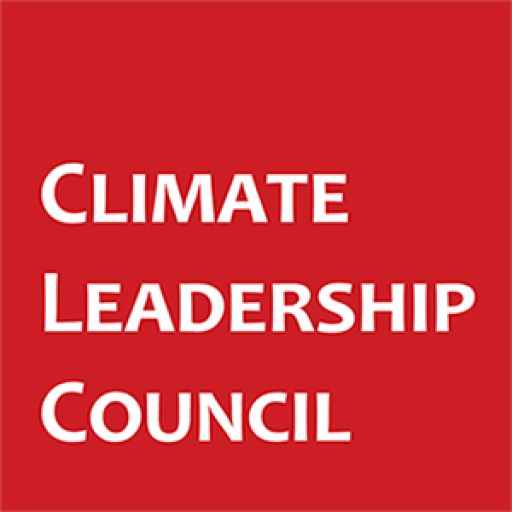The Montreal Protocol on Substances that Deplete the Ozone Layer is widely regarded as the most successful international environmental treaty to date. Recently, the Montreal Protocol further cemented its legacy as a climate success story with the first-ever recorded decrease in atmospheric concentrations of an anthropogenic greenhouse gas, hydrochlorofluorocarbons (HCFCs). HCFCs have a global warming potential up to 2,000 times higher than carbon dioxide. A recent study found that atmospheric HCFC levels have already fallen by three-quarters of a percentage point. Although this may seem small, it represents a significant achievement in reducing greenhouse gases globally.
The Montreal Protocol’s success, including the successful reduction of HCFCs, is a testament to engaging with like-minded international partners, leveraging trade mechanisms, and supplementing international efforts with domestic policies to lower global emissions levels.
The ozone hole and the Montreal Protocol
The ozone layer is a protective shield in the stratosphere that absorbs harmful ultraviolet-b radiation from the sun. This layer gradually began to thin, with a scientist confirming an “ozone hole” over the southern hemisphere in 1985. Evidence began to mount that the cause was primarily man-made chemicals, referred to as ozone-depleting substances (ODS).
A movement toward reducing and eliminating ODS began to gain momentum, driven by mounting scientific evidence of environmental damage, public health concerns, and the heightened interest of U.S. chemical manufacturers. Industry played a critical role in catalyzing action and was at the forefront of developing and marketing alternatives to ODS. Their positioning propelled the U.S. into a leadership role, galvanizing global talks that led to the adoption of the Montreal Protocol.
The Montreal Protocol (1987) is a legally binding international treaty that protects the stratospheric ozone layer by progressively phasing out the production and consumption of certain ODS. The Montreal Protocol has since been universally ratified and amended nine times, extending coverage to new substances and updating phase-out timelines. Currently, the Protocol regulates chlorofluorocarbons (CFCs), halons, hydrochlorofluorocarbons (HCFCs), hydrofluorocarbons (HFCs), and five other species of chemicals, adapting to new scientific evidence.
The continued international engagement and successful emissions reductions are testaments to the Montreal Protocol. These lessons can be applied to reduce greenhouse gas emissions in various policy sets. Our recent report, “What Fixing the Ozone Layer Can Teach Us About Carbon Import Fees,” applies lessons from the Montreal Protocol directly to a carbon import fee framework.
The successful global emissions reductions of HCFCs through the Montreal Protocol provide several key lessons for engaging in other emission reductions through international collaboration:
Forge strong international partnerships by using a stick-and-carrot approach:
The success of the Montreal Protocol is grounded in international cooperation. Initially, only forty-six countries ratified the agreement; crucially, it included all major ODS producers—including the U.S., France, Germany, and Japan. Over time, the treaty increased its members, achieving universal ratification in 2009. This is evidence that inclusive participation is ideal, but immediate broad participation is not required for an agreement to be successful. Policymakers aiming to forge effective partnerships can take a strategic approach by starting with a targeted group of key partners and gradually expanding the coalition.
The Montreal Protocol utilized a club-like framework that offered certain “carrots,” i.e., benefits, to incentivize compliance with time-targeted emission reductions. Benefits included frictionless trade, financial aid to qualifying countries, and transitional support through the Technical and Economic Assessment Panel. These incentives helped lower compliance costs and provided technical solutions, making it easier for countries to meet their targets.
Future agreements should adopt a similar approach, aiming not only to ease compliance burdens for members but also to offer alternative solutions. By providing tangible benefits and support to members, agreements can effectively reduce global emissions while encouraging member participation and cooperation.
Leveraging trade mechanisms:
Trade is a central component of the Montreal Protocol and was leveraged as a “stick” to encourage participation and compliance. The treaty banned trade between members and non-members, eliminating the competitive advantage of those outside the agreement and incentivizing participation. Not only did non-members not benefit, they lost market space. For future arrangements, banning trade with non-members is not practical. However, it highlights a valuable lesson: increased trade barriers, such as higher tariff rates on carbon-intensive goods for non-members, can encourage participation and reward environmentally sustainable trade flow
Supported by domestic legislation:
The U.S. further supported reducing the ODS outlined in the Montreal Protocol with domestic legislation. The first two rounds of covered chemicals were subject to excise taxes; other chemicals, including HCFCs, are subject to an allowance system. The EPA manages the phase-down of HCFCs with an allowance-based system with a complete phaseout scheduled for 2030.
Similarly, countries participating in reducing global emissions should be able to determine what policies work best for their domestic economy, industries, and political atmosphere while pursuing an international goal.
The Takeaway:
The Montreal Protocol and accompanying domestic policies have reduced ODS by an impressive 98% compared to 1990 levels. While there is still work to be done as manufacturers continue the transition to less harmful chemicals, the recent decrease in HCFCs marks a significant success. As the world collaborates to address greenhouse gases, the Montreal Protocol’s approach of forging international partnerships by using a stick-and-carrot approach, leveraging trade, and implementing domestic policies provides a successful blueprint for future efforts.
